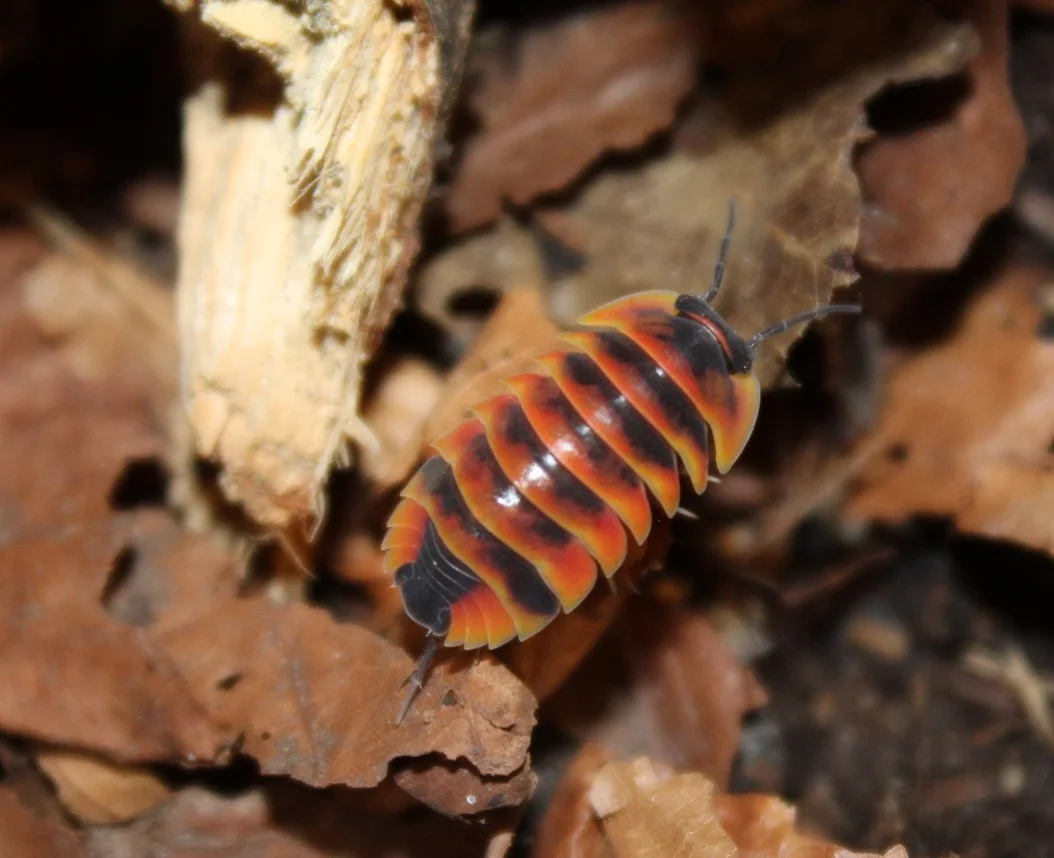
Ardentiella ‘Ember Bee’
Merulanella sp has been renamed to Ardentiella sp – https://nhcm.pensoft.net/article/144386/
Ardentiella sp. “Ember Bee” This isopod is a wonderfully coloured isopod that is very active. Being as active as it is this make a great species for a display tank. Within a larage colony of this isopod you will see a number of differnt colour patterns.
| Common Name | Ember Bee Isopod |
|---|---|
| Scientific Name | Ardentiella ‘Ember Bee’ |
| Taxonomy |
|
| Habitat | Tropical Forest |
| Region | Southeast Asia |
| Lifespan (Years) | 2 |
| Diet | They are detritivores, primarily feeding on decaying plant material, fungi, and other organic matter. This role is crucial in ecosystems as they contribute to nutrient recycling.. We have found that Grizzly Bear do like Banna Leafs |
| Humidity Range (%) | 60-90 |
| Temperature Range (°C) | 22°C and 28°C (°F – °F) |
| Conservation Status | Unknown |
|
Coloration |
Ember Bees are very colourful from the Reds \ Yellows and Blacks, there are a few different morphs of Ember bees that can express one of these colours more then the other, For example Ember Bee High Reds have alot more Red within there body.
If you keep a large colony of Ember bees you will soon see the different colour patterns. |
| Care Notes | Provide moist substrate with hiding spots. Use leaf litter, decayed wood, and moss. Ensure moderate to high humidity with ventilation
It has been known for these isopods to like and enjoy lithen sticks |
| Breeding Info | Can breed in captivity with stable environment. Some species are prolific, others slow. |
| Adult Size (cm) | Isopod, often reaching lengths of up to 1.8 cm. |
| Temperament | Shy, Fast Isopod that is very active and likes to climb |
Image credited to Bugs & Beyond
Was this helpful?
0 / 0